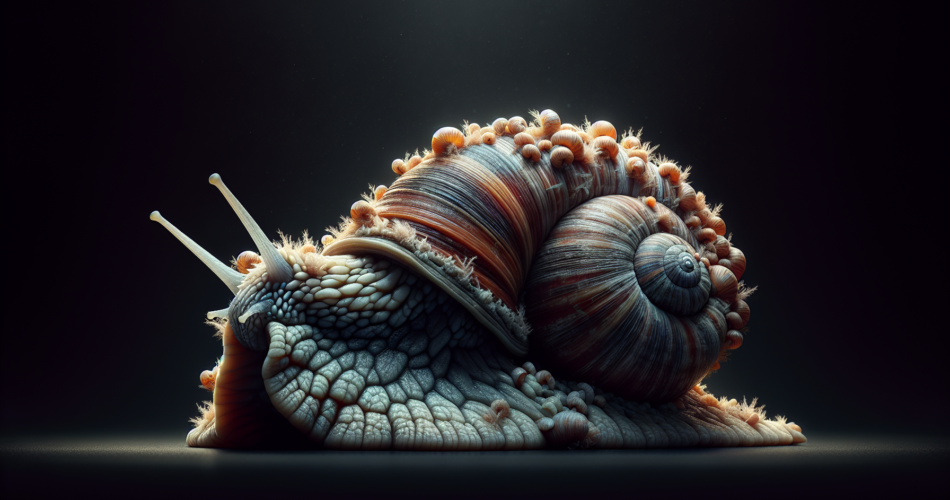Hibernation is often associated with warm-blooded mammals, such as bears and bats, but it also occurs in the fascinating world of invertebrates. Among these, snails exhibit an extraordinary ability to hibernate for extended periods, with some species capable of entering a dormant state for up to three years. This remarkable adaptation not only highlights the resilience of these creatures but also raises intriguing questions about their survival strategies in changing environments. This article delves into the extended hibernation patterns of snails and explores the biological mechanisms that allow them to endure such prolonged periods of dormancy.
An In-Depth Look at Snails’ Extended Hibernation Patterns
The hibernation of snails is primarily triggered by adverse environmental conditions, such as extreme temperatures, drought, and food scarcity. During these times, snails can enter a state known as estivation, which is a form of dormancy that allows them to conserve moisture and energy. Some land snail species can seal their shells with a mucous membrane, effectively blocking water loss and creating a microenvironment that can sustain them for years. This unique adaptation is particularly useful in arid habitats where rainfall is infrequent, allowing them to survive until conditions improve.
Research has documented cases of snails successfully emerging from hibernation after extending their dormant phases for three years. During this time, their metabolic processes slow dramatically, reducing their energy requirements to the bare minimum. The specific duration of dormancy can vary among different species, influenced by factors such as age, health, and environmental conditions. These extended periods of inactivity can vastly extend their lifespan and allow them to weather unfavorable conditions that would otherwise threaten their survival.
Moreover, the geographic distribution of the snail species plays a significant role in their hibernation strategies. For instance, snails in temperate regions may experience seasonal hibernation cycles, while those in tropical or desert environments may rely on estivation to survive prolonged dry spells. Scientists have observed that some species possess the remarkable ability to sense environmental cues—such as temperature fluctuations and humidity changes—that signal the onset of hibernation. This adaptability underscores the evolutionary significance of their hibernation behaviors, which enhance their chances of survival across diverse ecosystems.
Understanding the Biological Mechanisms Behind Three-Year Sleeps
The biological basis for snails’ ability to hibernate for several years lies in their unique physiological adaptations. Central to this process is the snail’s ability to regulate its metabolic rate, which can drop to as little as 1% of its active state. This remarkable metabolic suppression allows the snail to conserve energy and minimize the need for food intake during its prolonged dormancy. Research has shown that the snail can switch to anaerobic respiration, relying on stored energy reserves such as glycogen to sustain essential functions while in a hibernative state.
Additionally, the biochemical processes that occur during hibernation are fascinating. Studies have revealed that snails accumulate certain proteins and enzymes that protect their cells from damage during dormancy. These adaptations not only help maintain cellular integrity but also enhance their ability to withstand low-moisture environments. The production of these protective compounds is intricately linked to the snail’s genetic makeup, which has evolved over generations to facilitate survival in various conditions.
Moreover, recent advances in molecular biology have shed light on the genetic factors that govern hibernation in snails. Researchers have identified specific genes responsible for the synthesis of proteins related to stress response and metabolic regulation. This genetic flexibility enables snails to adapt to changing environmental conditions while maximizing their chances for future reproduction and survival. By understanding these mechanisms, scientists can gain deeper insights into the broader implications of hibernation and dormancy in various organisms, revealing the intricate connections between environmental factors, physiological adaptations, and evolutionary processes.
The remarkable ability of snails to hibernate for up to three years is a testament to the intricate adaptations that these creatures have developed over time. Their extended dormancy not only provides a survival strategy against harsh environmental conditions but also highlights the broader ecological significance of hibernation behavior in invertebrates. As researchers continue to explore the biological mechanisms underpinning this phenomenon, we gain a greater appreciation for the complexities of life in all its forms. Understanding these remarkable adaptations not only enriches our knowledge of snail biology but also opens new avenues for research into resilience and survival strategies across the animal kingdom.

